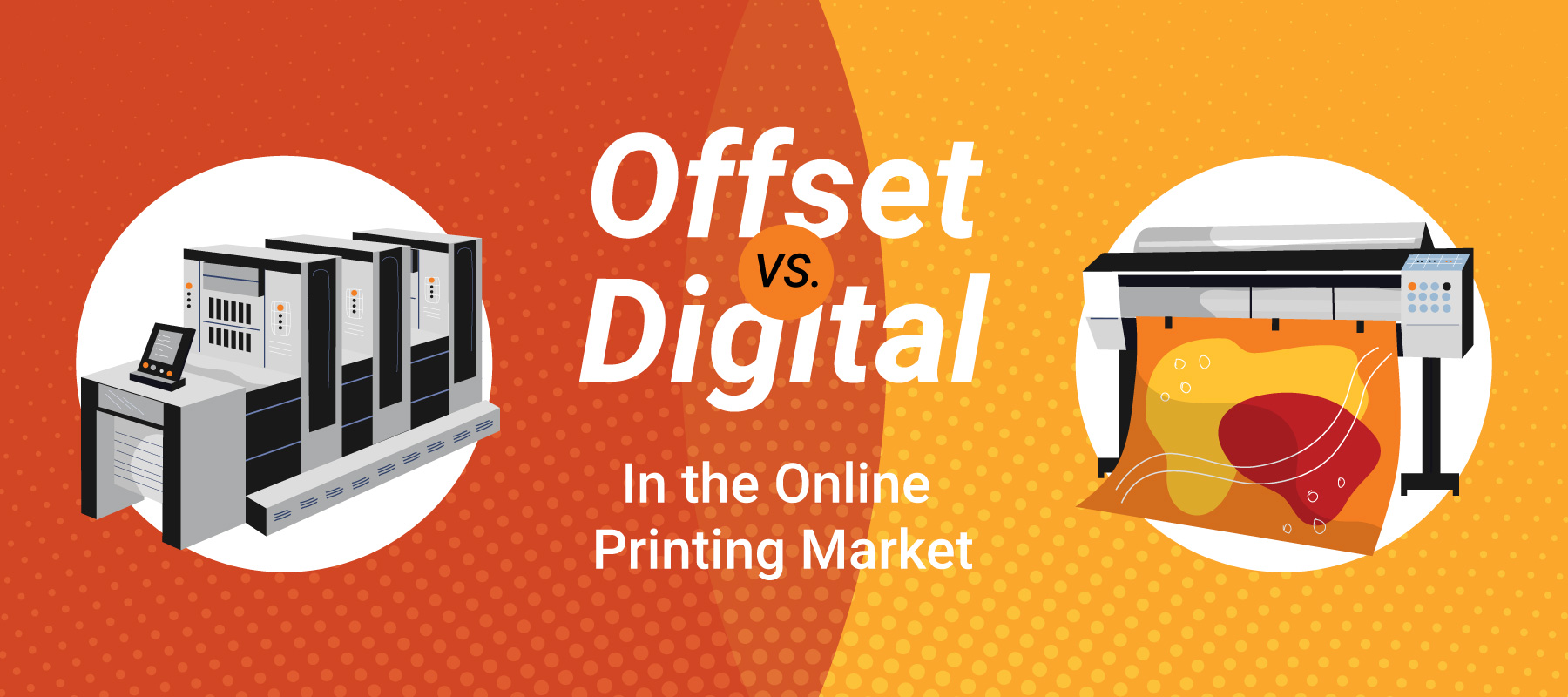By: Jim Hamilton, Consultant Emeritus at Keypoint Intelligence
Last year, I had the opportunity to interview a number of online print providers to get their thoughts on the market. Our discussions focused on the impact of the pandemic as well as planned print applications and strategies for the future.
One intriguing development that came out of that was the chance to see how they were using different print technologies to serve their customers. I was specifically interested in how digital print and offset lithography were being used.
Many Online Printers Rely on Offset Lithography
You might expect digital print technology to dominate the online printing market because of its ability to produce quick turnarounds and cost-effective jobs, yet offset leads many areas of this segment. Some of the companies in the online print market have no digital printing equipment at all. Their focus is on producing jobs with run lengths of 250 or higher, though their competitive sweet spot — and most profitable work — tends to be with run lengths of more than 1,000. They can do this because of the high volumes they handle and their efficient imposition methods.
In essence, these businesses fill their offset plates so effectively that they can attain economics of scale that digital print cannot compete with due to consumable and service costs. In addition, offset plate-making time is generally not an issue for these sites since these highly efficient operations generally have plates already lined up for the next job while the current job is running. Locations using offset presses will often implement inline UV dryers or coatings that allow the printed piece to be finished and delivered quickly.
The online print sites pointed out that amortization is better on offset (seven years versus five for digital). In addition, many sites are running offset presses that they have owned for decades and have already paid off. Digital printing systems tend to turn over more frequently and may be leased instead of purchased. Having to stock papers suited for digital print is another issue (in terms of logistics and costs) cited.
Where Does Digital Print Excel?
Digital print is very common for online printers serving business-to-consumer (B2C) markets and is also leveraged extensively where variable data content is required. Growth areas such as wide format graphics, signage, and short-run labels and packaging are well-suited for digital print.
Advantages of digital print include:
- Elimination of offset plate-making equipment, chemicals, maintenance, and labor costs.
- Multiple digital print devices can also be run by a single operator, whereas offset presses are typically more labor-intensive.
- Offset make-ready time and paper waste can be reduced, but it is still a significant factor compared to digital print.
- Potentially less costly inputs. These days, offset is being challenged even more by the increasing costs of aluminum (for plates) and the large amount of energy required to produce those plates (especially since energy cost is a sensitive topic).
- Paper usage is more efficient. Paper supply disruptions and the resulting higher paper costs become a factor due to the paper waste during offset make-ready.
- Easier to find labor that can produce digital print. There is difficulty in finding offset skilled labor.
Enter High-Speed Inkjet for Document Applications
In other conversations with PSPs, I’ve found an interesting market split among those sites with high-speed roll-fed inkjet systems.
On the one hand, some sites maintain both roll-fed inkjet printing systems while simultaneously owning one or more offset presses. These companies maintain that they need both technologies to serve their customers effectively. They can run their offset devices very efficiently even when run lengths are quite low, but they also value offset’s ability to be cost-effective for longer runs of 5,000 or more.
On the other hand, some roll-fed inkjet sites have either eliminated offset entirely or plan to do so soon. They cite the production capability of inkjet, its operational simplicity, and the ease of finding and training operators (compared to offset). They see their customers’ run length needs declining, and they believe that their inkjet systems will serve those changing needs well. In a few of these cases, these sites are just waiting for their litho press operators to retire before mothballing their offset devices. The owners of these sites have repeatedly told me that they see inkjet as the future.
The Bottom Line
I don’t like to bet against offset. Every time I think that digital print has an exclusive advantage, offset printers and their partners figure out innovative ways to automate the process. The question for me is, how big is the market for longer run applications where offset excels (and is most profitable)? For the sites that are giving up on offset, they feel that they can be effective without it by serving their customers efficiently and allowing them to leverage print-on-demand, just-in-time manufacturing, and variable data. Not coincidentally, these are all areas where digital printing excels.
Source: Jim Hamilton, Consultant Emeritus at Keypoint Intelligence
Author bio: Jim Hamilton of Green Harbor Publications is an industry analyst, market researcher, writer, and public speaker. For many years, he was Group Director in charge of Keypoint Intelligence’s (formerly InfoTrends’) Production Digital Printing & Publishing consulting services. He has a BA in German from Amherst College and a Master’s in Printing Technology from the Rochester Institute of Technology.


